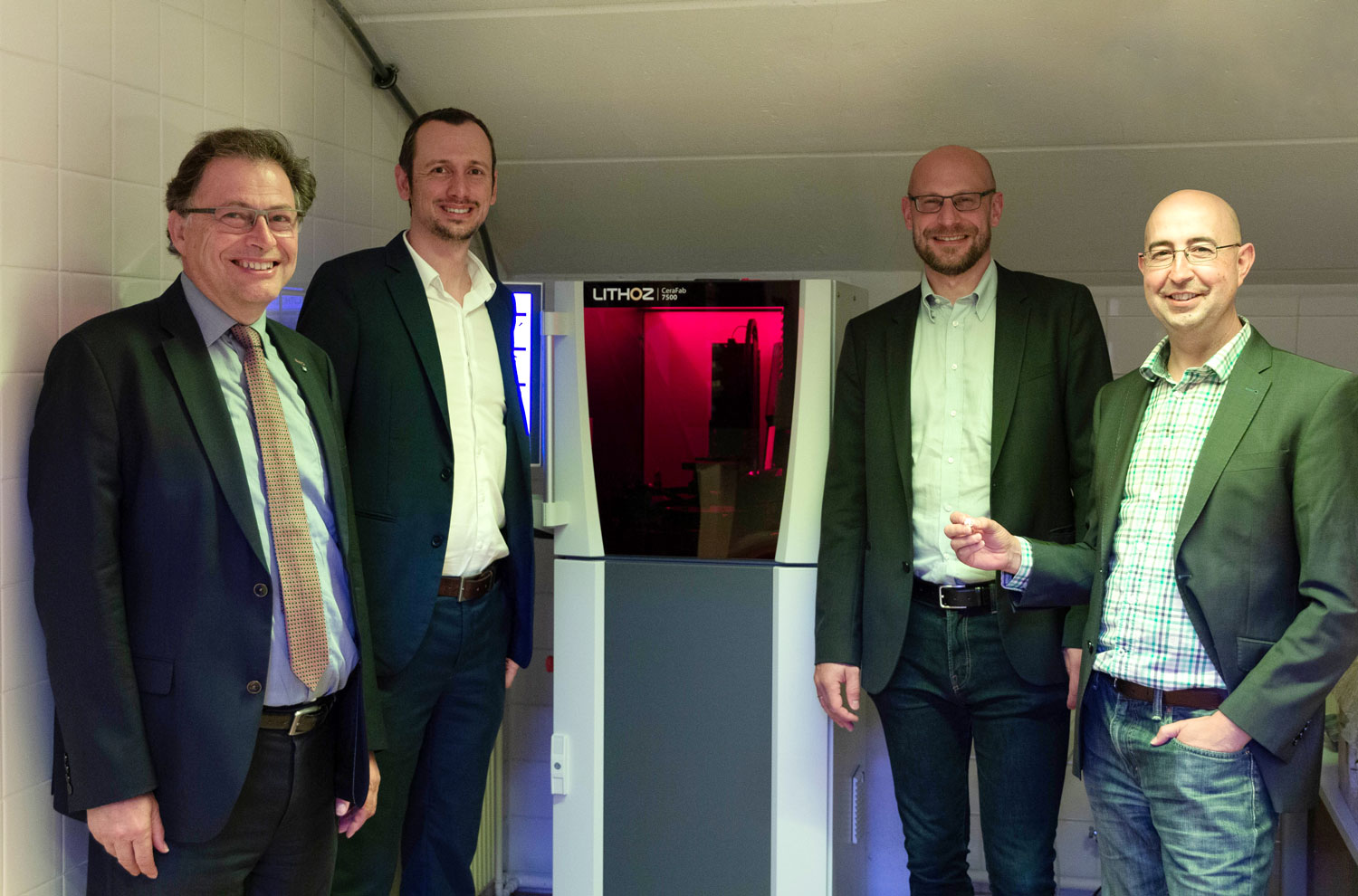The University of Leoben is the first university in Austria to have a 3D printer capable of processing hybrid materials. The CeraFab 7500, produced by Lithoz GmbH here in Austria, enables the production of complex, stable and high-resolution 3D components using various materials. It is now possible to print different ceramics as well as filled and unfilled polymers and high-viscosity formulations in general, facilitating applications in other areas (e.g. metal or other material combinations).
This new acquisition is the result of a research cooperation between the two Leoben Departments of Materials Science and Plastics Engineering in the field of the design, production and characterization of new materials with improved structural and functional properties. Lithoz, with whom these departments have already on many project, was founded in 2011 in Vienna and is now the world market and technology leader for 3D printers, materials and solutions for the industrial production of high-perfomance and bioresorbable ceramics.
Different material combinations possible
“New functionalities usually require the combination of different materials or classes of materials such as metal, polymers or ceramics, which are very difficult to process together due to their different thermo-physical properties. The realization of components with complex geometries is an especially great challenge,” explained university professor Dr. Raul Bermejo Moratinos of the Chair of Structural and Functional Ceramics. “Only the development of so-called additive manufacturing processes enables the processing of
different material combinations to produce complex components.”
The research carried out in Leoben will contribute to the development of design guidelines regarding the structural and functional properties of future 3D-printed materials. “Concrete examples of this are high-performance ceramics for biomedicine, such as dental implants or hip joints, 3D architectures with adjusted functional properties, such as dialectrics or piezoelectrics for microelectronics, cooling elements for the electronics industry and filled photopolymers for the additive manufacture of spectacle
frames or tooth replacement materials,” stated Assistant Professor Dr. Thomas Grießer of the Chair of the Chemistry of Polymeric Materials.
The 3D-printing process
The production process is based on lithography-based ceramic manufacturing (LCM) technology. Starting with a CAD model, the first step of the process is preparing for and optimizing the print job. The information for the component is digitally transferred directly from the computer to the CeraFab system and the ceramic-loaded liquid (known as slurry) is automatically dosed and applied in a transparent vat. The movable building platform is immersed in the slurry, with each layer then being selectively exposed to and cured by visible light from below. The layer image is generated using a digital micromirror device (DMD) in combination with a state-of-the-art projection system.
By repeating this process, a three-dimensional “green body” is created, layer-by-layer. During thermal post-processing, the binder is removed and the components are then sintered, resulting in fully dense ceramic parts. The aim is to create so-called “digital materials” or “digital components”, whereby properties such as color and mechanical strength can be modified three-dimensionally and selectively within the component.
Modern equipment for teaching
“In addition to research, the new 3D printer will also be used in the materials science master’s program at the University of Leoben,” Bermejo announced. “Alongside metals and polymers, we can now map all classes of materials in teaching as materials for additive manufacturing. Students at the University of Leoben can gain additional industrial experience through internships in the field of 3D manufacturing at Lithoz.”
Subscribe to our Newsletter
3DPResso is a weekly newsletter that links to the most exciting global stories from the 3D printing and additive manufacturing industry.



























